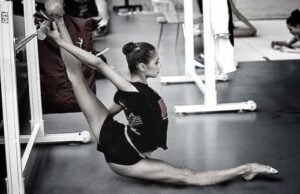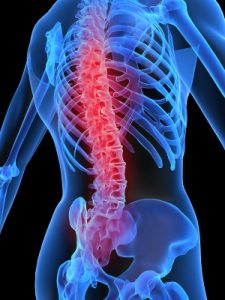By Etienne Siew and Nicole
Imagine: you have just finished an amazingly tough (but great!) workout. You head over to the water cooler to replenish your tank and cool down. After chatting it up with a workout buddy, and peer over to the stretching mat, a wave of laziness sets in. “Do I really want to walk over there to embarrass myself and touch only my shins? I’ll stretch later, plus that cafe across the street is calling my name!”
 Perhaps you are one of those people with the pliability of a 100 year old leather belt, or often give the evil eye to the extra limber gymnast in your yoga class. Fear not, you aren’t alone, not everyone in Vancouver has a yoga membership. While we’re not specifically promoting yoga, we ARE promoting that you keep an open mind as to why stretching is so good for you and why if you like being pain-free….maybe you could look in to it!
Perhaps you are one of those people with the pliability of a 100 year old leather belt, or often give the evil eye to the extra limber gymnast in your yoga class. Fear not, you aren’t alone, not everyone in Vancouver has a yoga membership. While we’re not specifically promoting yoga, we ARE promoting that you keep an open mind as to why stretching is so good for you and why if you like being pain-free….maybe you could look in to it!
What is flexibility?
Flexibility is defined as the “range of motion” around a joint. Limiting factors that we cannot control regarding the flexibility around the joint would be the structure of the joint itself. The factors that can increase the range of motion around the joint are ligament, tendon and muscle pliability surrounding that particular joint. These are the factors that improve as you begin to stretch more frequently.
Stay flexible…OR ELSE
As you may have noticed, flexibility is required for us to complete everyday tasks such as lifting, vacuuming, bending down to pick things up with ease. As we age, we often adopt a more sedentary lifestyle, which results in our muscles and ligaments tightening and become less flexible. Our body’s natural tendency is to move towards least resistance due to a concept called “economy of movement” (Remember the popular 90’s ultimate lazy person’s convenience gadget “The Clapper”? This is a prime example of economy of movement. Why get up out of your chair to turn off the lights, when you can just do it FROM your chair!). While this probably sounds logical and like a natural thing to move to, most of the clients we see that have back, hip and knee issues have roots in tight soft tissues and resulting lack of mobility. As muscles become tighter and less flexible, the body tends to adopt incorrect posture and motor patterning to compensate, which can lead to injury in the future and chronic pain.
 You know that saying, “use it or lose it”? It applies to your joints too. Let’s use arthritis as an example – Individuals with arthritic joints often limit movements because it’s painful, of course. Despite this, health professionals recommend keeping the joints healthy through controlled, regular movement, otherwise the muscles, tendons and ligaments will shorten around that area to help keep it stable and immobilized. Basically, the brain and body collaborate to say, “well if Gina doesn’t want to move this joint, we’ll just help that happen by locking everything around it so she doesn’t have to! When she tries to move it, we’ll make it hurt a lot, so she doesn’t try any more.” Just imagine having your car sit in storage for a long, long time, with cruddy oil and fluids just gunking everything up. When you try to start your car what happens? Not much. Maybe your battery has died, the gas line is clogged up, the engine seizes…a whole host of problems. It’s a pain in the butt, expensive and a loss of precious time to get your car into the shop to FIX what happened, when regular maintenance could have prevented it. Your body isn’t that conceptually different. So use it or lose it!
You know that saying, “use it or lose it”? It applies to your joints too. Let’s use arthritis as an example – Individuals with arthritic joints often limit movements because it’s painful, of course. Despite this, health professionals recommend keeping the joints healthy through controlled, regular movement, otherwise the muscles, tendons and ligaments will shorten around that area to help keep it stable and immobilized. Basically, the brain and body collaborate to say, “well if Gina doesn’t want to move this joint, we’ll just help that happen by locking everything around it so she doesn’t have to! When she tries to move it, we’ll make it hurt a lot, so she doesn’t try any more.” Just imagine having your car sit in storage for a long, long time, with cruddy oil and fluids just gunking everything up. When you try to start your car what happens? Not much. Maybe your battery has died, the gas line is clogged up, the engine seizes…a whole host of problems. It’s a pain in the butt, expensive and a loss of precious time to get your car into the shop to FIX what happened, when regular maintenance could have prevented it. Your body isn’t that conceptually different. So use it or lose it!
Types of stretches
 Dynamic stretching – This form of stretching involves moving the limb through its full range of motion, holding the stretch for 2 to 3 seconds and then releasing the limb. This will help to increase blood flow to the area that is about to be exercised, helping to feed oxygen to your muscles and carry metabolic waste products away from the area. The warm up literally increases the temperature of your body, which helps to enhance the viscoelastic properties of your soft tissues and ultimately prevent injuring the muscle and surrounding structures. Dynamic stretching should be performed before vigorous activity, in between your warm up and your actual workout. When integrated into the warm up, trainers and coaches will use “preparatory movements” prior to complex movements to bring your nervous system online to help prevent injury and help increase responsiveness.
Dynamic stretching – This form of stretching involves moving the limb through its full range of motion, holding the stretch for 2 to 3 seconds and then releasing the limb. This will help to increase blood flow to the area that is about to be exercised, helping to feed oxygen to your muscles and carry metabolic waste products away from the area. The warm up literally increases the temperature of your body, which helps to enhance the viscoelastic properties of your soft tissues and ultimately prevent injuring the muscle and surrounding structures. Dynamic stretching should be performed before vigorous activity, in between your warm up and your actual workout. When integrated into the warm up, trainers and coaches will use “preparatory movements” prior to complex movements to bring your nervous system online to help prevent injury and help increase responsiveness.
Static stretching involves moving your limbs through a range of motion and holding the position at the end point where the muscle feels most lengthened. The stretch should be held for approximately 30 seconds (up to 60 seconds) before relaxing the muscle and then repeated the movement 2 to 3 times. Static stretching is typically reserved for the end of your workout, as the goal during a static stretch is to return your muscles to pre-exercise length and relax the body. We use static stretching with deep breathing to stimulate full body and mental relaxation.
Active stretching requires work from the individual to actively contract one muscle to stretch the opposing muscle. A couple examples would be pulling your toes toward your shins by contracting your tibialis anterior, in order to actively stretch your calf complex, or squeezing glutes to further deepen a hip flexor stretch.
 Passive stretching involves external assistance exerted onto you in order to achieve a stretch. Passive (static) stretching is performed on clients at the end of their workout by our trainers, so that they can leave feeling limber and relaxed!
Passive stretching involves external assistance exerted onto you in order to achieve a stretch. Passive (static) stretching is performed on clients at the end of their workout by our trainers, so that they can leave feeling limber and relaxed!
(If you actually enjoy stretching, but feel too “lazy” to do it or go to yoga class, I recommend asking someone to do it for you! Come see us, but if you want a REAL treat, see a Thai Yoga Massage practitioner – our partner Alecia of Chakra Wellness is an experienced professional and you will LOVE what she does!)
How long should I stretch for?
Textbooks stretching guides will tell you that stretches should be held for 30 to 60 seconds. There IS a physical mechanism behind this number – it is important to hold the stretch for an extended period to the contractile nature of muscles. When muscles are stretched, the force is transmitted through the muscle along the tendon. Within the tendon, are sensory detectors called “Golgi tendon organs” which reflexively cause the muscle to contract to protect against over-stretching the muscle and damaging our joints. By holding the stretch, this allows the Golgi tendon organs to “relax” and allow the muscle to gradually lengthen. So this little sensory detector basically freaks out when it detects a stretch but after it realizes, nothing bad is going to happen and your muscles aren’t in danger it will relax and “let go” – which is often the sensation that people will report, is after a short period of time, the muscle slowly moves deeper into the stretch.
Don’t worry about getting a stopwatch out during your stretches, let your body tell you when it is right to move deeper in to a stretch; it might be after 10 seconds, it might be after 45 seconds. Remember to breathe through the entire movement (which is what your yoga teacher keeps saying, isn’t it?) – if there is so much tension in your muscle that you don’t even notice that you are holding your breath, the it will be impossible for your body to relax into the stretch and go further. (There is a very large mental component to flexibility and stretching but that’s another blog).

As for intensity of a stretch, our recommended intensity, on a scale of 1 – 10 (one being no stretch at all, and 10 being complete utter pain and disaster) is between 3 to 5. In this zone, you might be thinking, “oh yeah, that feel SOOOO good, I’m getting a great stretch and I feel very relaxed.” Individuals that push their range of motion beyond what they are currently capable of often create micro tears in their soft tissues, which can lead to injury and pain in the future. My favourite indicator for when a stretch is too intense, is when clients become pirates (they’ll squinch their face and close one eye. They might even make a little “arrrrr” sound…if I’m lucky). Even if a client says “it’s good!” we’ll back off to where their face returns to normal.
When should I stretch?
As mentioned above, different modes of stretching should either be performed before (dynamic) or after (static) exercise, but to improve range of motion, a dedicated time for stretching is recommended 4 to 7 days a week, and ensuring that each major joint is included. Having great hip flexibility does not translate to shoulder flexibility! Watch out for left-side:right-side differentials. You may want to spend more time on the side that is tighter, than on muscle groups that are already limber.
—-
It’s surprising how many of us find stretching to be a burden and think of it as a potential waste of time (it’s okay, you’re not alone! Not everyone in Vancouver attends yoga classes). However, having limited range of motion around your joints (or allowing your joint mobility to fall below normal ranges) can be detrimental to not only your fitness progress, but a huge contributor to injury and pain. Play it safe and just get started on a quick and easy stretching routine. Not sure where to start? You could try a few for your hips and see how it feels! What have you got to lose? Range of motion?
Next blog, we will discuss the OTHER SIDE of flexibility – how much is too much? Attempting the splits – is it worth it? And when stretching can be detrimental.







